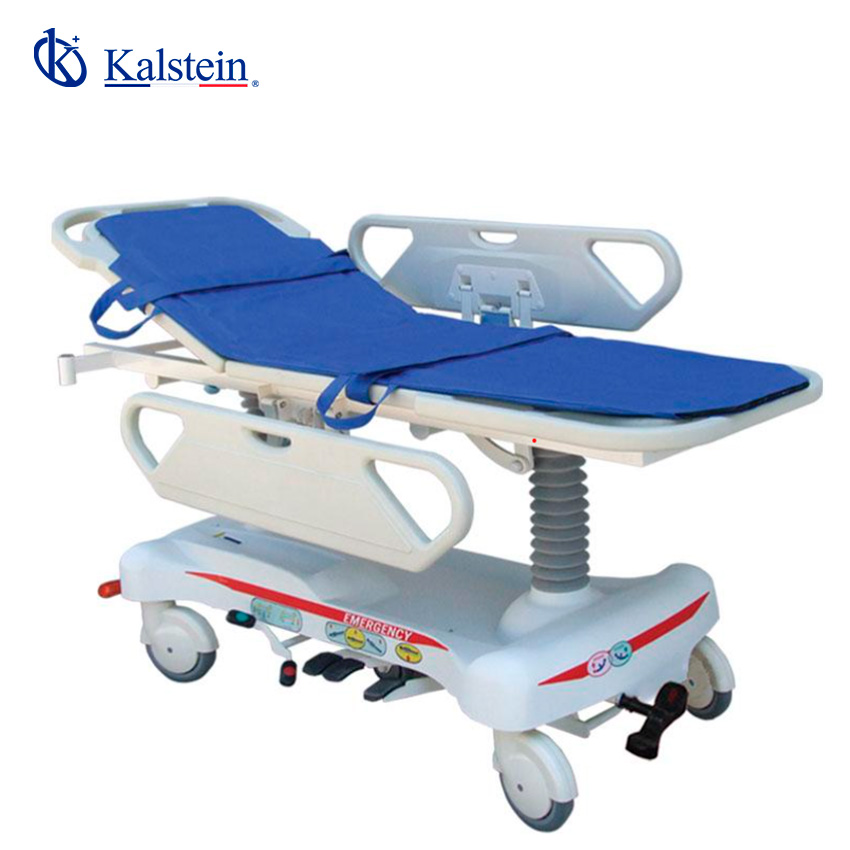In the fast-paced world of medical technology, constant innovations aim to improve efficiency and safety in hospital environments. The hydraulic transfer stretcher stands out as a brilliant example of this evolution.
This article explores the benefits, unique features, and how this equipment addresses specific problems for users, highlighting the importance of advanced medical technology.
If you’re seeking a blend of innovation and quality, you’ve come to the right place. At https://kalstein.de/category-product/medical-line/medical-transfer-stretcher/ we offer you the luxury to explore our exclusive catalog of laboratory equipment. We manufacture each piece of equipment with a level of excellence. Our intuitive and agile online shopping channels are designed for your convenience, ensuring the friendliest prices. Don’t hesitate any longer, we bring science to life, it’s time to become part of our community. https://kalstein.de/
Benefits of the Hydraulic Transfer Stretcher
Hydraulic transfer stretchers offer significant benefits in medical settings. Firstly, they allow effortless patient mobility and transfer. The hydraulic system facilitates height adjustment, reducing the risk of injuries for both patients and medical staff. This aspect is crucial, as manual patient handling is a common cause of injuries in hospitals.
Additionally, the hydraulic transfer stretcher contributes to better ergonomics for medical staff. By reducing the need for heavy lifting, these stretchers minimize fatigue and physical stress on caregivers, allowing them to focus more on patient care and less on physically demanding tasks. This, in turn, improves overall care quality and patient safety.
Unique Features of the Hydraulic Transfer Stretcher
The hydraulic transfer stretcher stands out for its unique features that make it indispensable in any modern healthcare facility. One such feature is its multi-position adjustment capability. This adjustment allows for quick and precise adaptation to the individual needs of each patient, whether for examinations, procedures, or simply providing comfort during their time on the stretcher.
Another notable feature is the robust and durable construction. Made from high-quality materials, the stretcher is designed to withstand daily intensive use in hospital settings. Its sturdy structure not only ensures a long service life but also guarantees patient stability and safety during transfers and movements.
Addressing Specific User Problems
One of the primary concerns in healthcare is the safe and comfortable transfer of patients. The hydraulic transfer stretcher effectively addresses this issue. Its design allows patients to be moved with minimal discomfort and without the need for abrupt lifting. This is especially beneficial for patients with reduced mobility or painful conditions that can be exacerbated by sudden movements.
Moreover, the hydraulic transfer stretcher solves the problem of limited space in many medical facilities. Its adjustable and maneuverable design allows it to be used in confined areas, optimizing available space without compromising patient safety or comfort. This flexibility is essential in hospitals and clinics with space constraints.
Health Innovation through Medical Technology
The integration of hydraulic technology into transfer stretchers represents a significant advancement in health innovation. This system allows for smooth and precise adjustments that adapt to the changing needs of patients. The ease of use of these systems reduces the necessary training for staff, which in turn increases the operational efficiency of healthcare institutions.
Additionally, hydraulic technology enhances responsiveness in emergency situations. The speed at which the stretcher can be adjusted allows for immediate and adaptive care in critical moments. This factor is crucial for emergency management, where every second counts, and the ability to respond quickly and effectively can make a difference in patient outcomes.
Comparative Advantages with Other Transfer Systems
Compared to other transfer systems, hydraulic stretchers offer several advantages. One of them is the significant reduction in physical effort required by medical staff. Traditional manual systems often involve heavy lifting and adjustments that can be physically demanding and prone to errors. In contrast, hydraulic stretchers allow for effortless adjustments, reducing the risk of injuries and improving precision in patient positioning.
Another advantage is the versatility and adaptability of hydraulic stretchers. They can be used in a wide variety of situations and configurations, from emergency rooms to intensive care units. This flexibility makes them a valuable investment for any medical institution, providing a single solution for multiple patient transfer and mobility needs.
Recommendations and Conclusion
To maximize the benefits of hydraulic transfer stretchers, their incorporation is recommended in all critical areas of a hospital or clinic. From the patient’s perspective, these stretchers offer a more comfortable and safer experience during transfers. For medical staff, they provide an ergonomic tool that improves efficiency and reduces the risk of injuries.
In conclusion, the hydraulic transfer stretcher represents an essential innovation in the field of medical technology. Its advanced features and significant benefits make it an indispensable tool for any modern healthcare institution. By integrating this technology, hospitals can improve both the quality of patient care and the safety and well-being of medical staff, aligning with the goals of health innovation and advanced medical technology.

